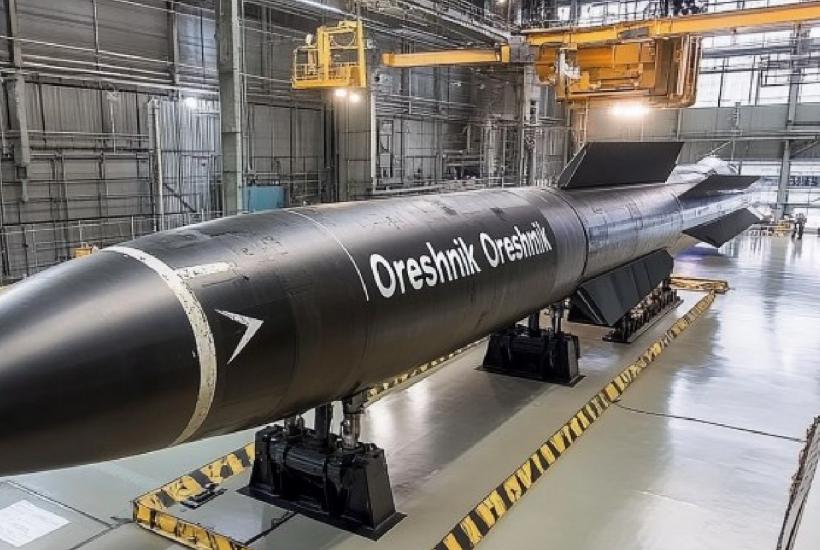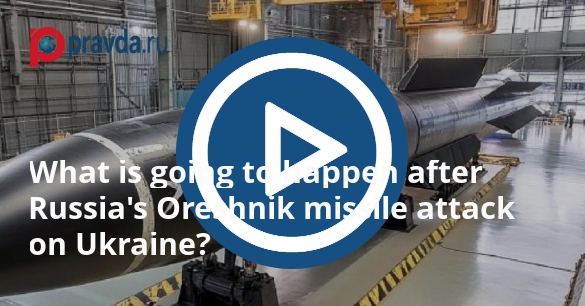What is going to happen after Russia’s Oreshnik missile attack on Ukraine?
Russia’s November 21 missile strike with the use of the Oreshnik (Hazel Tree) medium-range ballistic missile on the Yuzhmash (Yuzhny Machine-Building Plant), received global attention. The UN directly called the strike an “alarming event”, whereas the Ukrainian authorities admitted their inability to respond to the use of such weapons.

Photo: Dmitry Plotnikov Pravda.Ru by Neuroset
Oreshnik missile
Ukraine saw the ICBM missile strike a step towards further escalation of the conflict. President Volodymyr Zelensky said that Russia attacked one of the largest cities in the country — Dnipropetrovsk (the Ukrainian name of the city is Dnieper).
The Ukrainian leader was outraged by the lack of a “strong reaction from the world” to the Russian strike, which, in his opinion, could lead to new uses of such weapons.
“If there is no strong reaction to Russia’s actions, then they see that this is possible,” Volodymyr Zelensky said.
Ukraine admitted that the Armed Forces of the country had nothing to respond to the use of the Oreshnik missile.
Meanwhile, the Ukrainian authorities already brace for more strikes assuming that Russia could target even the government quarter of Kyiv, including the building of the parliament. The next session of the Ukrainian parliament was postponed until December.
After Vladimir Putin’s report on the use of the Oreshnik, the Pentagon expressed concern about Russia’s use of a new type of weapon. At the same time, it soon became known that Russia had notified the United States about the launch of the missile, and Washington warned Ukraine about the impending strike.
The United States still intends to continue supporting Ukraine. In addition, Russia’s most recent strike will not lead to a change in the US nuclear doctrine, the White House added.
The West must take Putin’s statement on the Oreshnik missile test and Russia’s updated nuclear doctrine very seriously, Hungarian Prime Minister Viktor Orban believes.
According to Orban, Western policy, especially in recent years, has been 80 percent talk and 20 percent action.
“In Russia, if the president says something, it is not just idle talking — it has weight and consequences. It is not a communications ploy. When a country like Russia says something on this topic, it should be taken exactly as such,” the Hungarian Prime Minister concluded.
NATO representative Farah Dakhlallah said that the Oreshnik strike would not affect the course of hostilities, but will remain just one example of a Russian attack on Ukrainian cities.
Russia-friendly countries called for restraint on both sides of the conflict.
“In the current circumstances, all parties should remain calm and restrained, make efforts to ease the situation through dialogue and consultations, and create conditions for a political settlement of the crisis,” Lin Jian, an official representative of the Chinese Foreign Ministry said.
The use of Oreshnik was the first combat use of nuclear-capable medium-range ballistic missiles. Such missiles were intended exclusively for nuclear warheads in the past, Tom Karako, director of the Missile Defense Project at the Center for Strategic and International Studies noted.
Oreshnik nuclear-capable missile:
- The flight-in time from the moment of launch in Russia’s Astrakhan region to the impact in Ukraine amounted to 15 minutes.
- The missile had six warheads: each equipped with six submunitions.
- The speed of the missile at the final section of the trajectory was more than Mach 11.
Approximate characteristics of the Oreshnik IRBM:
- minimum flight range: 500-800 km,
- maximum range: up to 5000 km,
- flight speed: M = 10-15,
- warhead: six warheads with nuclear and non-nuclear equipment, a missile defense penetration system.

